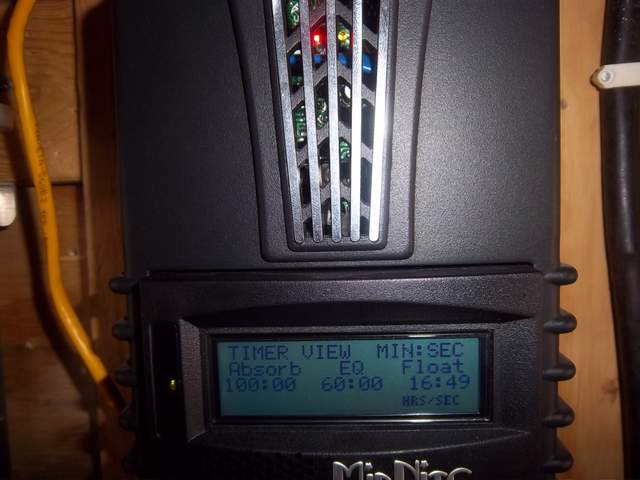I've been playing with my panels, trying to decide what's best, and wonder what the solar experts think?
I put a re-configurator switch (technical term) in the combiner so I don't have to mess with high voltage wiring that could leave me quiverin' like a bowl full of jelly.
If I flip the switch to Low Voltage the panels operate at about 80-90 Vmp. If I flip it to High Voltage the panels operate at about 105-120 Vmp. At solar noon I switched it back and forth and measured the power output to the battery bank. Can't tell one bit of difference in output. However, the Classic seems to run hotter (the cooling fan runs more) on high voltage than it does on lower voltage. I'm guessing any gains in the wiring run at the higher voltage are eaten up in the Classic having to step higher voltage power down to bank voltage, so it's a wash.
What would be the advantage (if any) of leaving them in High Voltage Configuration on cloudy days and early morning/late afternoon? I did notice one thing - I got one wind turbine tower that casts a shadow across the array from about 9:30 to 11:00 this time of year (in summer it doesn't do that). On High Voltage the controller doesn't complain about PV Shading. On Low Voltage it it does.
The wind is blowing good today so the controller doesn't get to do much now in Absorb. But when the wind picks up the controller floats the panels up to 128 with only a couple amps coming in like this to limit their output. And it says the Voc is 137

If the wind turbines go into Full Crank then it stops putting out power altogether and shows 136

In really cold weather I suppose that could be an issue and cause the controller to lock the panels out in HyperVOC.
And now here's what happens once it drops into Float in high voltage config - the controller absorbed the bank for the minimum 100 minutes and then dropped into float right away. The green float light is on on the side of the display, and the red light is on inside the controller, which means AUX 1 is active and the system is heating water at 2 kW load for the rest of the day:

When the wind isn't working it's fine. But when the wind turbines go to Full Spin the controller still cuts the panels back to just about zero and the panel voltage floats up to Voc:

I think this will work OK for now. But I wonder what problems this could cause in really cold weather (like 20 below F)?
--
Chris